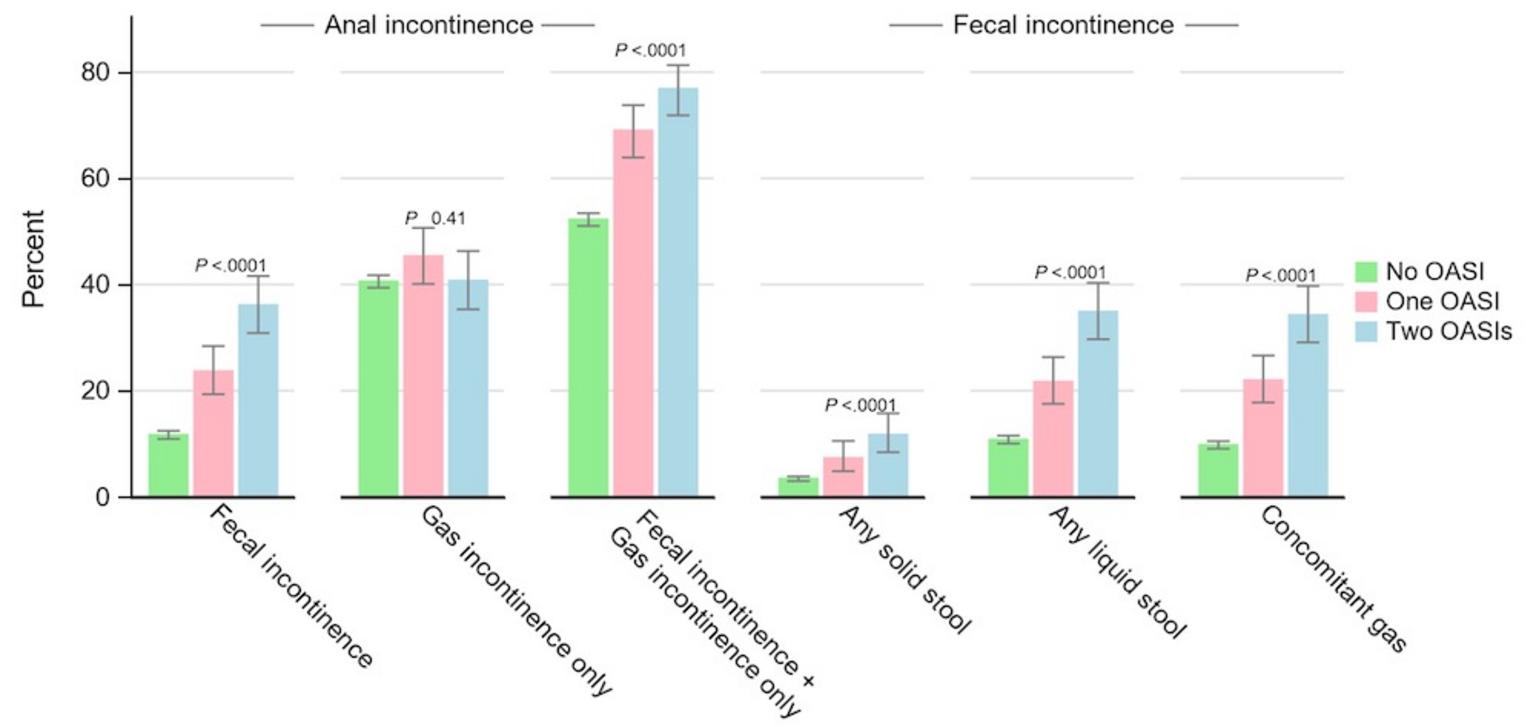THESIS. A study that was part of a recent doctoral thesis at the Institute of Clinical Sciences reports a significantly higher risk of developing gas and fecal incontinence among women who suffer an anal sphincter injury during childbirth.
On February 10, Ida Nilsson will defend her doctoral thesis in obstetrics and gynecology. The thesis explores the long-term effects of anal sphincter injuries suffered during childbirth. The title of the thesis is: The long-term effects of obstetrical anal sphincter injury on pelvic floor function (Link to the thesis in GUPEA).
Preventing sphincter injury during childbirth reduces theprevalence, severity, and impact on quality of life due to accidental bowel leakage ,and can also delay the onset ofaccidental bowel leakage. A national action plan resembling the one introduced in Norway in 2004 seems to be effective in reducing the frequency of such injuries and maintaining a low frequency.
Pelvic floor dysfunction is an umbrella term for a number of conditions, including urinary incontinence, fecal incontinence, and pelvic organ prolapse. It is a major global health problem for women of all ages, but particularly among the elderly. The most important risk factor for future pelvic floor disorders is having had a vaginal birth.

“The thesis examines the effects on pelvic floor function 20 years after childbirth with or without anal sphincter injury, and with or without a vacuum extractor” says Ida Nilsson, a resident physician in gynecology and obstetrics at the Women’s Clinic at Södra Älvsborg Hospital in Borås.
Two million women in four countries
Women included in component papers I, II, and IV of the thesis were recruited from the Swedish Medical Birth Register and answered a questionnaire about current pelvic floordisorders. All had given birth to one or two children about 20 years before answering the questionnaire. The study groups included women with no sphincter injury, women with one sphincter injury, and women who had sphincter injuries in two out of two deliveries.
Paper III examines the incidenceof sphincter injury among nearly two million women, from the Canadian, Norwegian, Swedish, and Austrian birth registers. The study examined vaginal first-time mothers, with or without an obstetrical vacuum extractor or forceps delivery and with or without a previous cesarean section, between 2004 and 2016.
Long-term effects of anal sphincter injuries at childbirth

Some of the main research findings are listed below:
- Having a sphincter injury entails a very high risk of fecal incontinence two decades after birth.
- The prevalence, severity, and self-perceived impact of gas and fecal incontinence increased after one and two sphincter injuries.
- The incidence of sphincter injury was three times higher after a delivery with a vacuum extractor compared to a delivery without a vacuum extractor and also after a first delivery with a sphincter injury.
- There appeared to be considerable potential for lowering the incidence of OASI, since the incidence varied widely among the four countries studied.
Ida Nilsson believes that the results in her thesis indicate that introducing a national action plan with regular and structured education and training of all categories of staff in the delivery wards could be decisive in reducing the incidence of sphincter injuries.
“The long term follow-up time that we have in our studies, from the sphincter injury to the evaluation of the pelvic floorsymptoms, is largely unique. And the results can be helpful for women, midwives, and obstetricians when planning a birth after a previous sphincter injury.”
This underscores the importance of all women being well informed and able to take responsibility for their own choice of birth method.
BY: SUSANNE LJ WESTERGREN
INFORMATION OM THE DEFENCE OF DOCTORAL THESIS
Time: February 10, 2023, 09:00–11:30
Location: Arvid Carlsson Auditorium, Academicum, Medicinaregatan 3, Gothenburg
The defense of thesis will be presented partly in Swedish and partly in English
Principal supervisor: Maria Gyhagen
Assistant supervisor: Ian Milsom
External reviewer: Katariina Laine, University of Oslo, Norway
Examining committee: Christina Bergh, Hans Törnblom, and Eva Uustal











